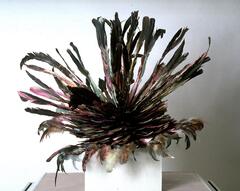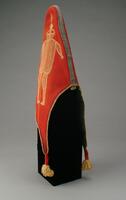13 UMMA Objects
13 UMMA Objects

Kuba (Kuba (Democratic Republic of Congo style))
Titleholder's hat
1945 – 1955
Museum Purchase made possible by the Friends of the Museum of Art
1985/1.163
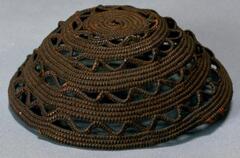
Kuba (Kuba (Democratic Republic of Congo style))
Titleholder's hat
19th century
Museum purchase
1985/2.72
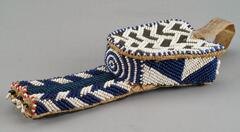
Kuba (Kuba (Democratic Republic of Congo style))
Beaded Miniature Hat
1945 – 1955
Museum Purchase made possible by the Friends of the Museum of Art
1985/1.164
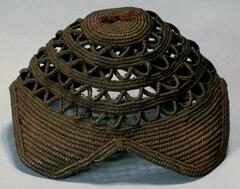
Kuba (Kuba (Democratic Republic of Congo style))
Titleholder's hat
19th century
Museum purchase
1985/2.71
![This type of hat (<em>gat</em>) was once the most commonly worn men’s headgear by Korean aristocratic government officials and commoners. In the mid-Joseon period, they had tall crowns and wide brims. When Heungseon Daewongun (興宣大院君, 1820–1898), the father of King Gojong (高宗, r. 1863– 1907) seized power in the late Joseon period, he made the wearing of shorter crowns with narrower brims mandatory. This hat is in good condition despite some losses at the crown. The straps are made of black silk gauze.
<p>[Korean Collection, University of Michigan Museum of Art (2017) p. 282]</p>
This type of hat (<em>gat</em>) was once the most commonly worn men’s headgear by Korean aristocratic government officials and commoners. In the mid-Joseon period, they had tall crowns and wide brims. When Heungseon Daewongun (興宣大院君, 1820–1898), the father of King Gojong (高宗, r. 1863– 1907) seized power in the late Joseon period, he made the wearing of shorter crowns with narrower brims mandatory. This hat is in good condition despite some losses at the crown. The straps are made of black silk gauze.
<p>[Korean Collection, University of Michigan Museum of Art (2017) p. 282]</p>](/media/W1siZiIsIjIwMjIvMDkvMjQvOHg1czJ5dTN6a19kZWZhdWx0LmpwZyJdLFsicCIsInRodW1iIiwiMjQweDIwMCJdXQ?sha=458f32b9eb0fe2c9)
Korean (Korean (culture or style))
Man's Hat
20th century
Gift of Bruce and Inta Hasenkamp and Museum purchase made possible by Elder and Mrs. Sang-Yong Nam
2004/1.317.1
Korean (Korean (culture or style))
Man's Hat
20th century
Gift of Bruce and Inta Hasenkamp and Museum purchase made possible by Elder and Mrs. Sang-Yong Nam
2004/1.317.2
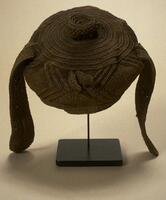
Kuba (Kuba (Democratic Republic of Congo style))
Titleholder's hat
1895 – 1905
Gift of Marc Leo Felix, Brussels
1986/2.62

1800 – 1999
Gift of the Robbins Center for Cross Cultural Communications in memory of Warren M. Robbins
2014/2.78.3
Loading…
